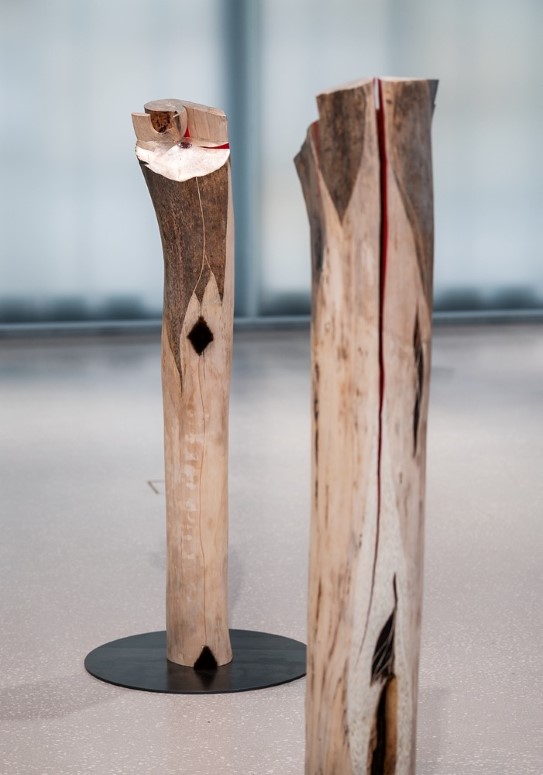Nu fal/Slik ja (2020), Dál fal/Akkurat ja (2020), Ii fal/Slett ikke (2020), Utstøtt/Hilgojuvvun (2016)

Transcription
Ingunn Utsi:
Everything in nature has its own soul.
Narrator:
Ingunn Utsi, who has worked for many years as an artist, learned something very important from her mother: a heartfelt and profound recognition that nothing around us is dead. The mountains, the trees, the rocks – everything around us has something within it that makes it what it is.
Ingunn Utsi:
Because of this recognition, I always carry on conversations with the materials I use in my sculptures. Everything and everyone has something about them that has its own will and its own purpose. According to my understanding of the world, it’s not, and never has been, permissible to damage, crush or destroy something that can’t defend itself.
I grew up, and still live in, an open, treeless landscape, by the Porsanger Fjord in Finnmark. I've gone on long hikes along the coast from my home. We used to find a lot of driftwood. If I find a large piece of driftwood, a material that I find really captivating, I take it home with me and work on it very, very slowly. I’ll always shape the wood with a sense of humility. I’ll seek out and nurture its strengths and weaknesses, so that in the end, the material takes on its own identity.
Because absolutely everything has its own history. I simply nurture it and help to convey it, and in doing so I tell a completely new, and perhaps different, story through my artwork.
Narrator:
The fact that the National Museum has no works by Ingunn Utsi in its collection is perhaps an example of how the museum hasn’t been good enough at keeping itself up to date. Utsi’s approach, the way she has conversations with her materials, has a lot in common with the working methods of many younger artists. Is that why it’s perhaps even more important to display Ingunn Utsi’s art here in the museum?